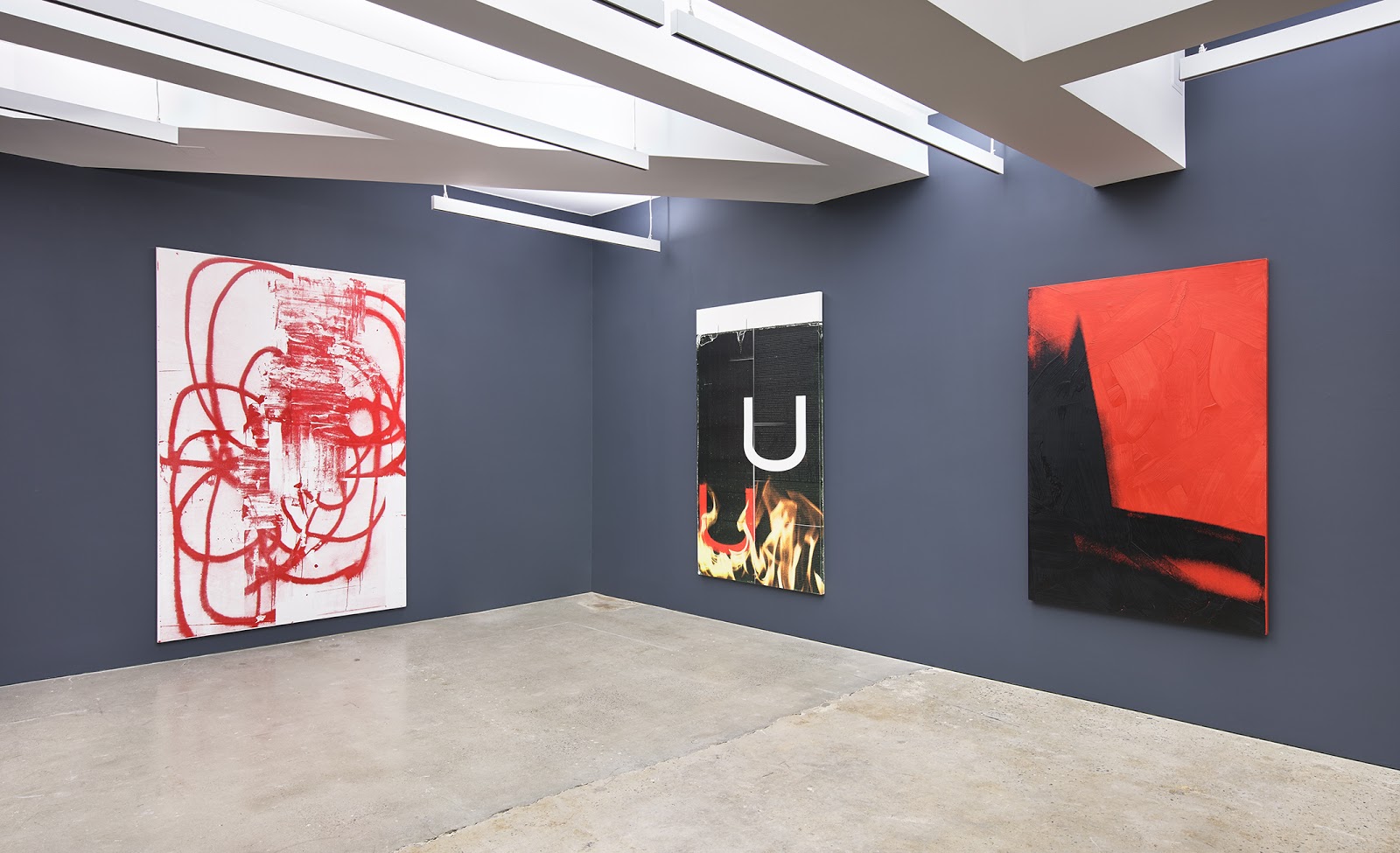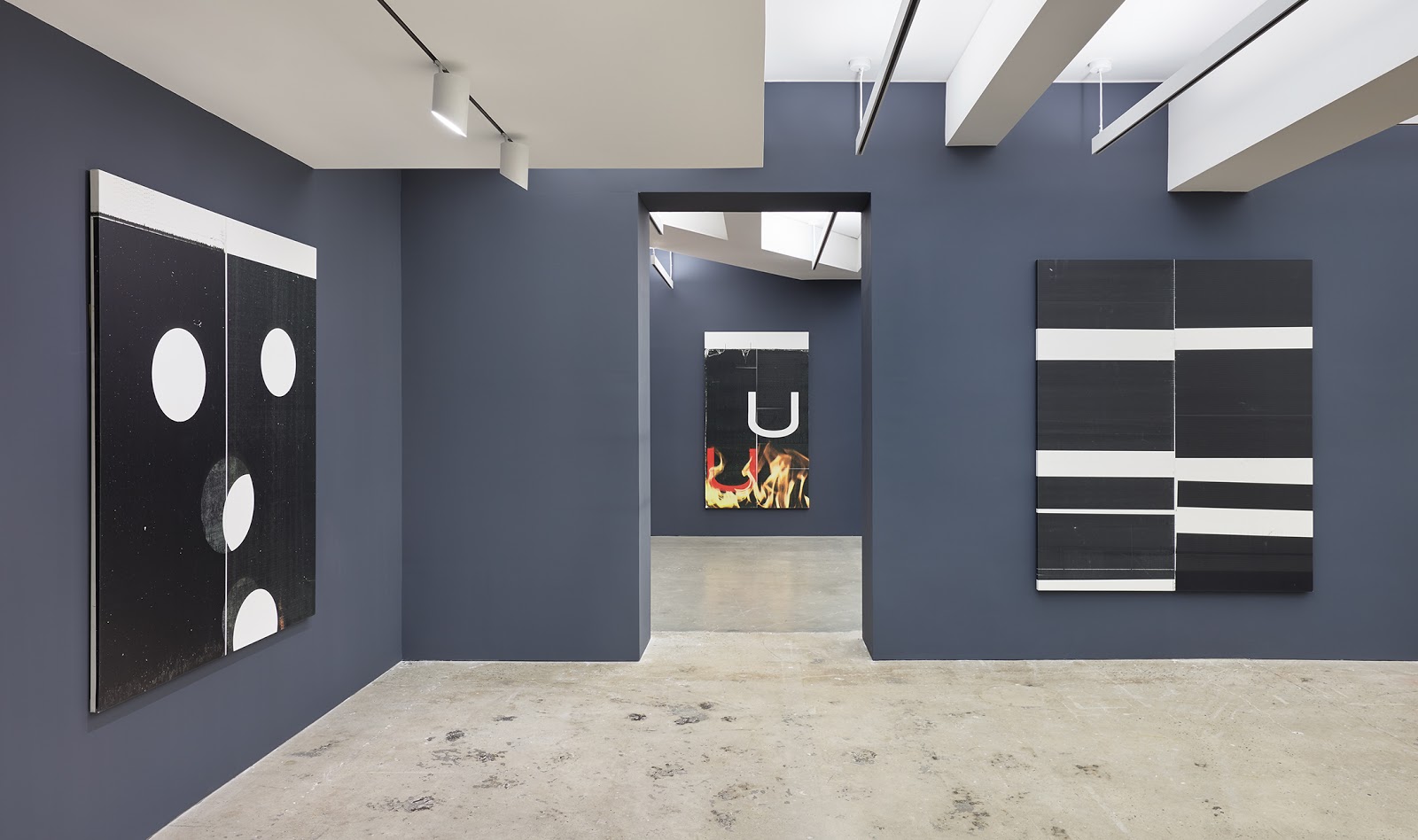Late in his life, the artist Andy Warhol, known for Pop art portraits, sculptures, and installation art, turned to abstract expressionism. He made mechanically driven silkscreen prints of everyday objects informed by postwar abstraction. The works have influenced a generation of artists that followed, two of which are artists Christopher Wool and Wade Guyton. Wool and Guyton have taken the paintings and conceptually reimagined them as something entirely their own. The three artists’ works, which make for an interesting contemporary history of the abstract print, are now on display at Nahmad Contemporary gallery in a group exhibition titled, Warhol, Wool, Guyton.

Installation view: WARHOL WOOL GUYTON at Nahmad Contemporary. Photographs by Tom Powel Imaging. © 2016 The Andy Warhol Foundation for the Visual Arts, Inc. / Artists Rights Society (ARS), New York. © Christopher Wool; Courtesy of the artist and Luhring Augustine, New York. © Wade Guyton; Courtesy of the artist and Petzel Gallery, New York.
“The compelling visual and conceptual similarities amongst the works by Andy Warhol, Christopher Wool, and Wade Guyton sparked the impetus for this exhibition,” explains Joe Nahmad, the gallery’s founder and the organizer of the exhibition. “I found the parallels between the paintings especially intriguing in that they were not only generated during nonintersecting periods of time, but they were also created using very distinct adaptations of the printmaking process.” He says, “The exhibition traces the influence of Warhol’s renowned technique on the contemporary print processes of Wool and Guyton.”
Videos by VICE

Installation view: WARHOL WOOL GUYTON at Nahmad Contemporary. Photographs by Tom Powel Imaging. © 2016 The Andy Warhol Foundation for the Visual Arts, Inc. / Artists Rights Society (ARS), New York. © Christopher Wool; Courtesy of the artist and Luhring Augustine, New York. © Wade Guyton; Courtesy of the artist and Petzel Gallery, New York.
“Beyond a purely aesthetic affinity, the mechanical and technological print processes connect the works conceptually in their capacity to summon the expressive, humanly gestures of abstract painting,” Nahmad adds.
The seven Warhol paintings on display in the exhibition were all created by the artist in the late 1970s and early 1980s. They are of repeated silhouettes of crosses, eggs, and knives. The series uses the silkscreen’s mechanical process to heighten the figure-ground relationships. The gesture suggests that Warhol’s abstraction was deeply informed by his earlier Pop pieces. The foregrounded objects are mediated by Warhol’s love of color, which functions as flat abstraction in the background of the works. The most abstract works—1978’s Shadow, Shadow (Red) and 1984’s Rorschach, the inkblot results of the famed psychological test—allude more squarely to a postwar influence. What looms larger is how Warhol’s process rethought abstraction. For the Rorschach series, for instance, the artist created his test by painting one side of a canvas then folded it to imprint the other side. The series for Warhol shows how the viewer often projects their desires and thoughts onto abstraction.
Warhol’s retooling of the meaning of abstraction is seen in Wool and Guyton’s mechanical works, which expand abstraction into singular, technologically-enhanced representational forms. Wool, who is primarily known for his black-and-white language works, mixes silkscreening techniques with pattern painting that recalls closely Warhol’s Knives, Crosses and Eggs art. At times he even uses photography to construct works by employing Photoshop to alter them before silkscreening them as paintings.

Installation view: WARHOL WOOL GUYTON at Nahmad Contemporary. Photographs by Tom Powel Imaging. © 2016 The Andy Warhol Foundation for the Visual Arts, Inc. / Artists Rights Society (ARS), New York. © Christopher Wool; Courtesy of the artist and Luhring Augustine, New York. © Wade Guyton; Courtesy of the artist and Petzel Gallery, New York.
Guyton uses physical labor and computer programming to create and construct his art. The works Untitled (X) and Untitled (Striped), on view in the show, were made through a process of the artist dragging the digitally made representations through an Epson Ultrachrome inkjet printer. On linen, the resulting images are often distorted by Guyton’s process, evoking both Warhol’s handpainted intervention in his Rorschach series, and Wool’s mechanical gestures. Warhol and Wool’s techniques can be seen in Guyton’s Untitled, 2006, a digital painting that features a white letter “U” above burning flames that appears over a xeroxed black surface.
“The groundbreaking techniques heralded by Warhol in his creation of prints mobilized the innovative process employed by Wool and Guyton,” explains Nahmad. “Wool expands on Warhol’s silk-screening technique by fusing the medium with digital photography and computer-aided manipulation.” He says, “Likewise, Guyton substitutes the silkscreen with the digital printer to transfer imagery onto canvas, modernizing the medium with the technological advances of today. Propelling the printmaking discipline to newfound complexities, these three artists are renowned for their radical impacts on contemporary art and the process of its creation.”
Warhol, Wool, Guyton continues through January 14 at Nahmad Contemporary. Click here for more information.
Related:
The Exclusive Story Behind Warhol & Basquiat’s Boxing Photos
10 Master Artists Display Alongside Their Successful Assistants
Don’t Miss ‘Andy Warhol | Ai Weiwei’ – The NGV’s Largest Exhibition Ever

